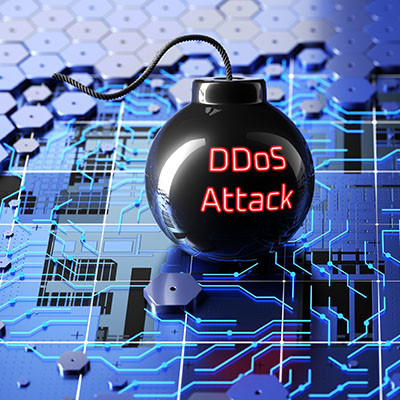ImageSys LLC Blog
It doesn’t always take a complicated malware or ransomware attack to break your business. Sometimes it’s as easy as someone sending you an email and pretending they have authority over you. Compromising a business email is one of the most common and easy hacking attacks to pull off, so you should be aware of how to put a stop to it.
Did you know that you could be the victim of a data breach without even knowing it? It’s possible, really. If a hacker has managed to infiltrate a website or service that you use without giving up the goat, so to speak, they could have your information and you might not even know about it. Thankfully, there are ways around this, and it all starts by asking that simple question: what if my information was stolen, and what is it being used for?
Using USB drives to spread threats is certainly not a novel concept, and you should always be wary of potential threats using USB drives to make their rounds. In particular, a new and emerging threat called the Raspberry Robin worm could shake things up in the world of cybersecurity. What is this threat, and how can you keep yourself and your business safe from its attacks?
How many scams and spam messages do you receive on a daily basis? We bet it’s more than you think. Scams affect countless individuals and can cost a pretty penny if they are not handled appropriately. Let’s go over why some individuals might be more likely to fall for scams than others, as well as what you can do to keep your employees from inadvertently costing your company
Continuing their record of the past few months, Cloudflare has stopped yet another DDoS attack—this time, one of record-breaking severity. According to the company, this attack—specifically, an HTTPS DDoS attack—was the largest one ever recorded.
Let’s explore what this kind of attack is in the context of what happened, and what you can do to help keep your business safe.
Cybercrime is often thought of as a loner’s game. There is this misconception that all hacks are carried out by hoodie-clad people in dark corners of a room. Nothing could be further from the truth. Today, we will take a brief look at organized cybercrime and why its growth is an ominous sign for businesses.
Technology drives almost everything in modern society, so it’s not a surprise to see hackers being represented in the entertainment we consume. They don’t always get it right, however. In fact, most of the computing constructs demonstrated in entertainment don’t actually exist in real life. This week, we thought we’d briefly discuss the differences between hackers in real life and the ones consistently represented in today’s movies and TV.
Sometimes you might be browsing the Internet and come across an advertisement for free downloads of Windows applications. Obviously, this is too good to be true, and hackers tend to exploit advertisements to spread their influence across devices. Malvertising is used to deliver various types of threats, all of which can cause considerable harm to unprepared businesses.
Certain methods used by hackers are more effective than others, and it’s largely in part due to these methods working around and subverting popular security measures. They might take on the look of a legitimate email or web source, like social media, in an attempt to convince the user that it is indeed a message they can trust. The latest in this type of hacking attack includes Google Docs.
Phishing attacks are nothing new in the business world, and they will almost certainly become more prevalent as time passes. Unfortunately, phishing attacks have adapted their practices to get around advancements in security technology, so businesses must work extra hard to spread awareness of phishing to their employees and train them appropriately.
Hackers and scammers are always trying to turn a profit on businesses just like yours, and you might be surprised by some of their ingenuity. One such way that some hackers choose to make a profit is by twisting the “as a service” business model into something that is particularly dangerous. Even Microsoft has gone on record and called out a particular group of Phishing-as-a-Service providers as a problem.
Believe it or not, someone can actually purchase access to your organization’s network under the right circumstances. This is the unfortunate reality that we live in, where the commoditization of data and network access has become a real problem. According to a study from KELA, hackers can sell access to compromised networks for a pittance compared to the amount of work you have invested in building your business. Therefore, you must do everything in your power to protect your network and prevent this from happening.
With every new day comes a new data breach that exposes the personal data of countless people. The most recent in this troubling trend is the LinkedIn data breach, an event that exposed 700 million profiles and led them to be put on sale on a hackers forum. LinkedIn denies the data breach, but how much truth is in this statement? Let’s take a closer look.
Ransomware attacks are nothing new, but when was the last time they made headlines by instigating a gas crisis? A Russia-backed hacking collective called DarkSide targeted Colonial Pipeline, a company responsible for almost 45 percent of the fuel for the Southeastern United States, with a devastating ransomware attack. The attack led to a spike in fuel prices and spotty availability while also showing cracks in the nation’s energy infrastructure, and it has even sparked a renewed interest in cybersecurity.
We’ve all seen advertisements for the websites that offer to connect you with the professionals ready to help you with a specialized task around your home, from repair work to childcare to cleaning services. Unfortunately, cybercriminals have adopted a similar tactic to help market their services, leading to the creation of a sort of hackers’ gig economy on the Dark Web.
It’s a bit of a nightmare scenario for a business, born of watching too many crime thrillers: a criminal syndicate hacks into their systems, wreaking havoc and stealing all their data, while also destroying that company’s reputation. Is this scenario a fantasy? To a point, yes—but not so much as you might think.




















